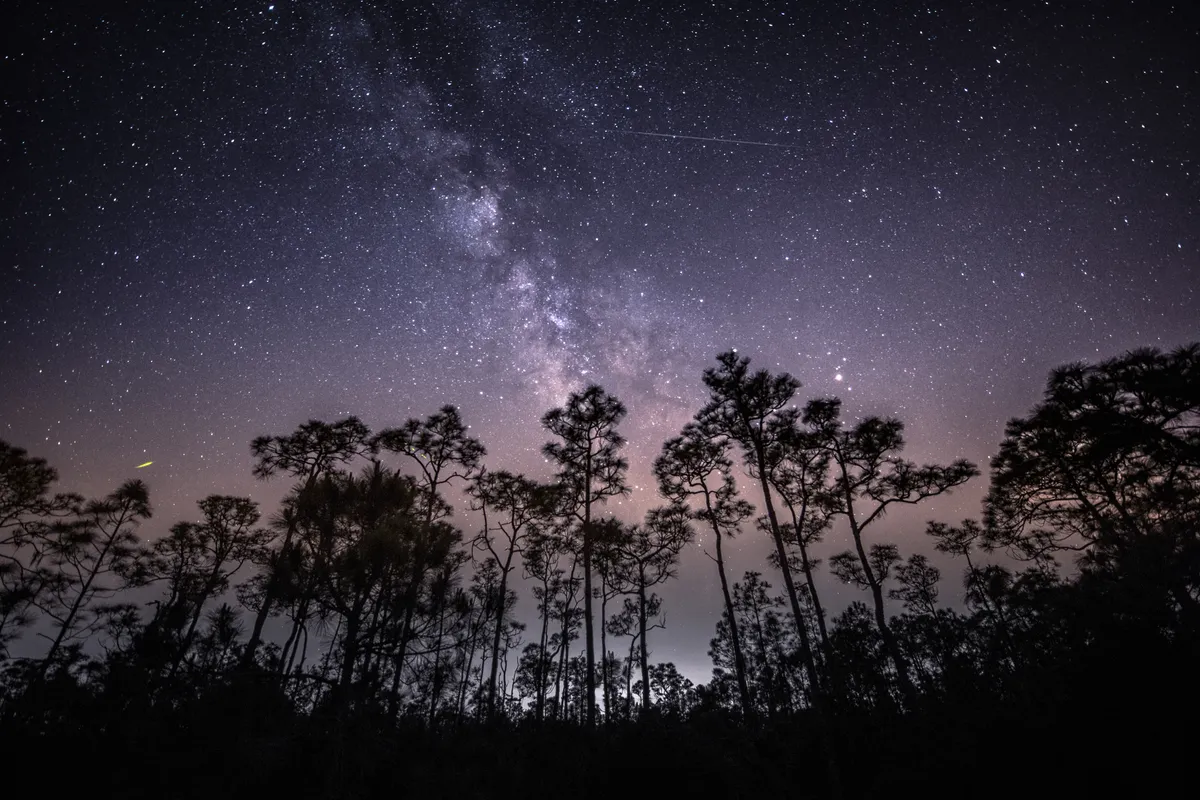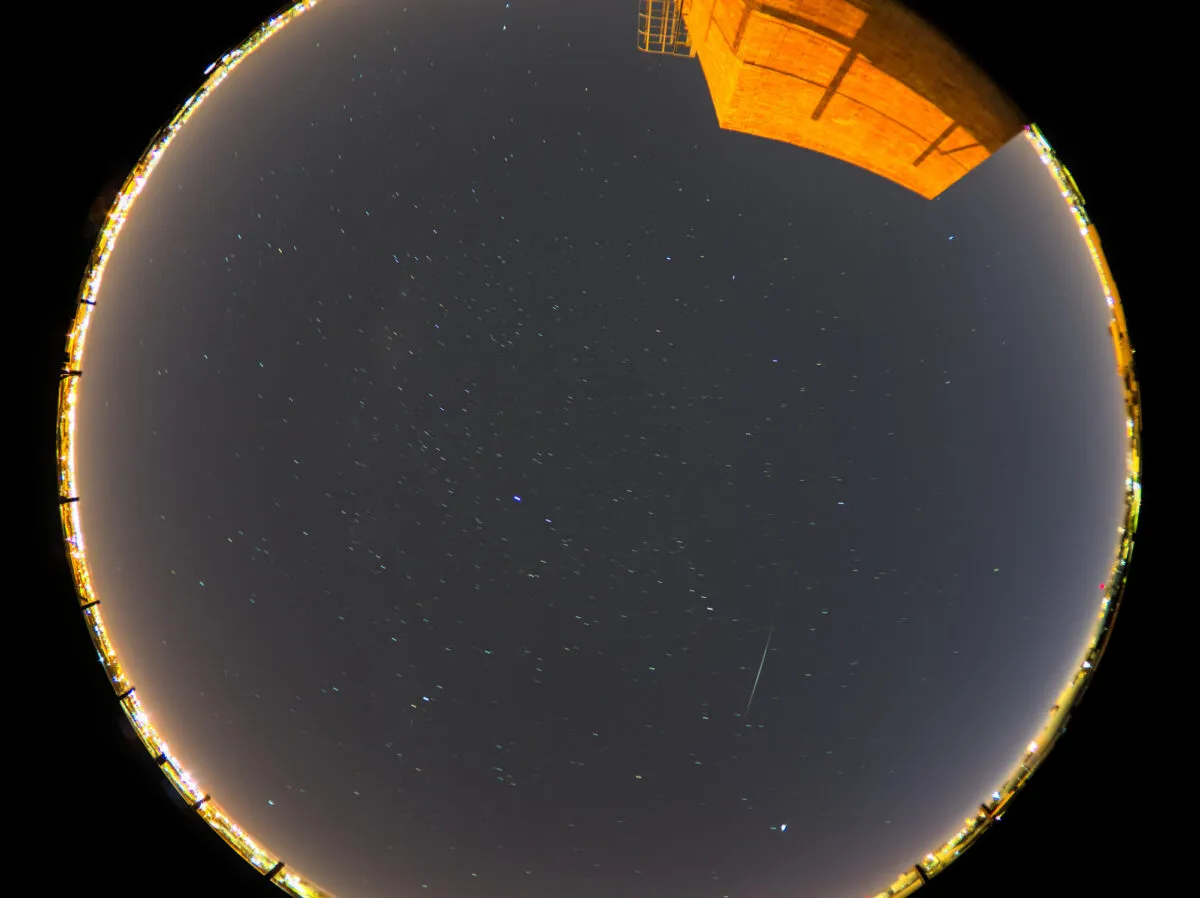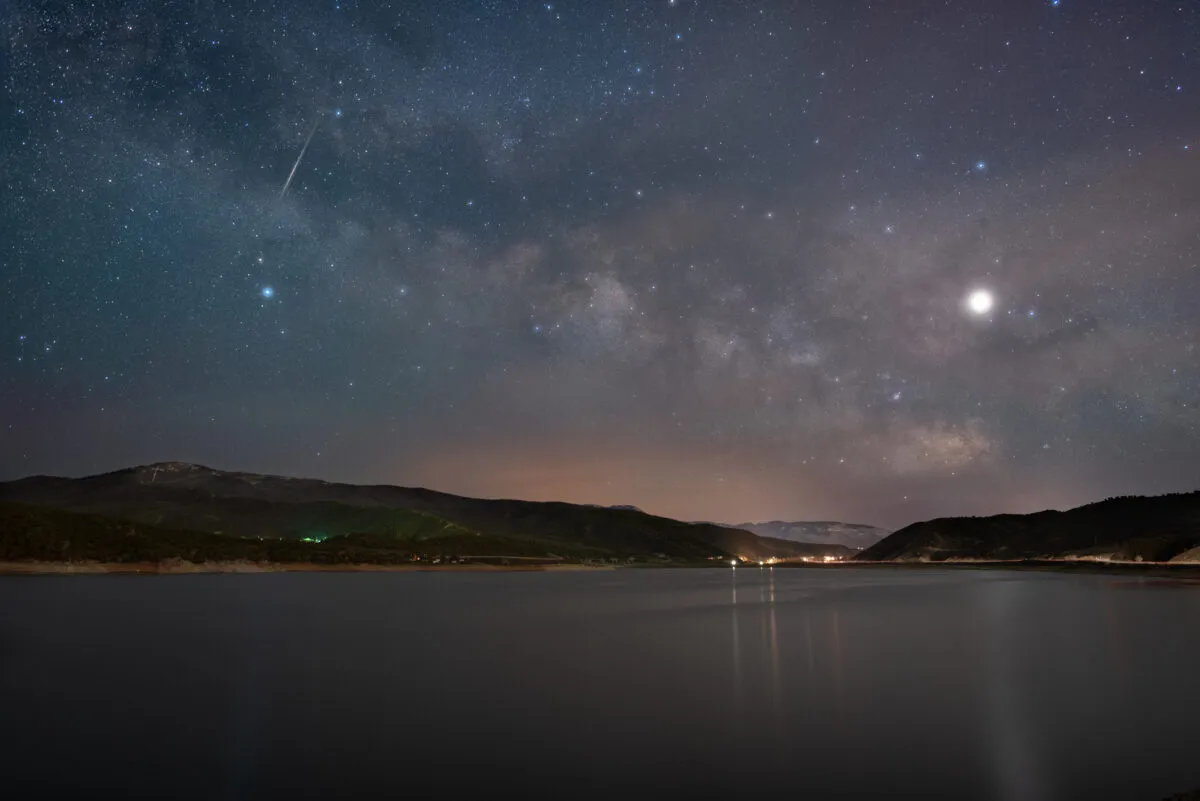The 2023 Eta Aquariid meteor shower reaches peak activity this week, on the morning of 7 May, and the best chance of seeing an Eta Aquariid is in the run up to dawn.
The Eta Aquariid meteor shower is visible from about 19 April to 28 May each year, with peak activity marking the period during which you're most likely to see one (weather depending).
However, this year a bright, nearly-full Moon will hamper the number of meteors you can see during peak activity.

On 6 May the Eta Aquariid meteor shower's zenithal hourly rate (ZHR) should reach 55 meteors per hour, but the ZHR is really an estimate for comparative purposes between the annual meteor showers, and assumes perfectly dark conditions, no light pollution, no clouds and the radiant - the point from which the meteors appear to emanate - being directly overhead.
With a low altitude radiant, the number of Eta Aquariids you are likely to see should be lower, but it's still a great opportunity to enjoy the warmer spring nights and do a bit of stargazing while meteor-watching.
For a fun activity to do at the same time, read our guide on how to star hop.

What is the Eta Aquariid meteor shower?
The Eta Aquariid meteor shower is one of many annual meteor showers that occur at the same time every year. Meteor showers are caused by Earth passing through streams of debris left behind by comets - and occasionally an asteroid, like for example asteroid 3200 Phaethon, which causes the Geminid meteor shower.
As Earth passes through the cosmic debris, particles enter the atmosphere at high speeds and they burn up, causing a bright streak to be seen in the sky. For more on this, read our guide What causes a meteor shower?
The Eta Aquariid meteor shower is one of two annual showers caused by Halley’s Comet, the second being the Orionid meteor shower which peaks in the third week of October in Orion.
Meteoroids from Halley’s Comet enter Earth’s atmosphere at a speed of 66km/s, putting them towards the upper part of the meteor speed spectrum.

How to see the Eta Aquariid meteor shower
The Eta Aquariid shower is best suited for the Southern Hemisphere sky, but it is certainly possible to see in the UK.
The radiant (the point at which the shower appears to a terrestrial observer) is located near to the Water Jar asterism in the constellation of Aquarius, the Water Bearer.
Top tips for seeing an Eta Aquariid meteor
- Wrap up warm: it may be springtime, but meteor-observing involves lots of sitting still
- Find a dark spot away from light pollution
- Use a reclining chair or sun lounger to prevent neck-ache from looking upwards for extended periods
- Let your eyes get well and truly adjusted to the darkness for maximum sensitivity
- Locate the radiant
- Lean back and keep watching. If you see a bright steak emanating from the radiant, you've seen an Eta Aquariid
It is also advisable to observe with friends and family. This is much safer than standing in a remote location at night on your own, but also means you and the rest of your group can keep a record of how many meteors you spot.
Take turns to have one person note down the times that meteors are spotted, giving everyone else the chance to focus on observing.
If you do produce a record of how many Eta Aquariid meteors you saw, can could even submit your data to the British Astronomical Association Meteor Section.
Pete Lawrence is an expert astronomer, seasoned meteor observer and a co-host of The Sky at Night.
